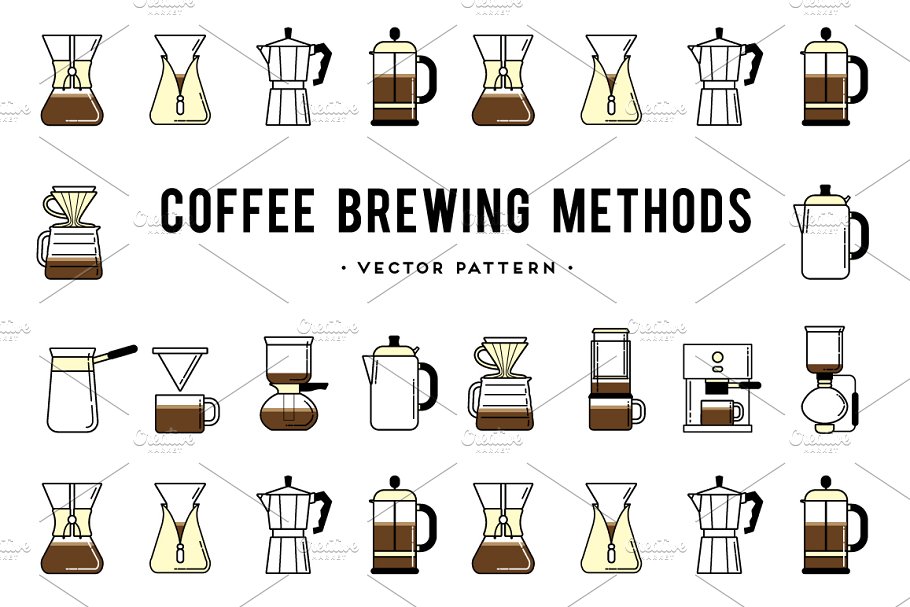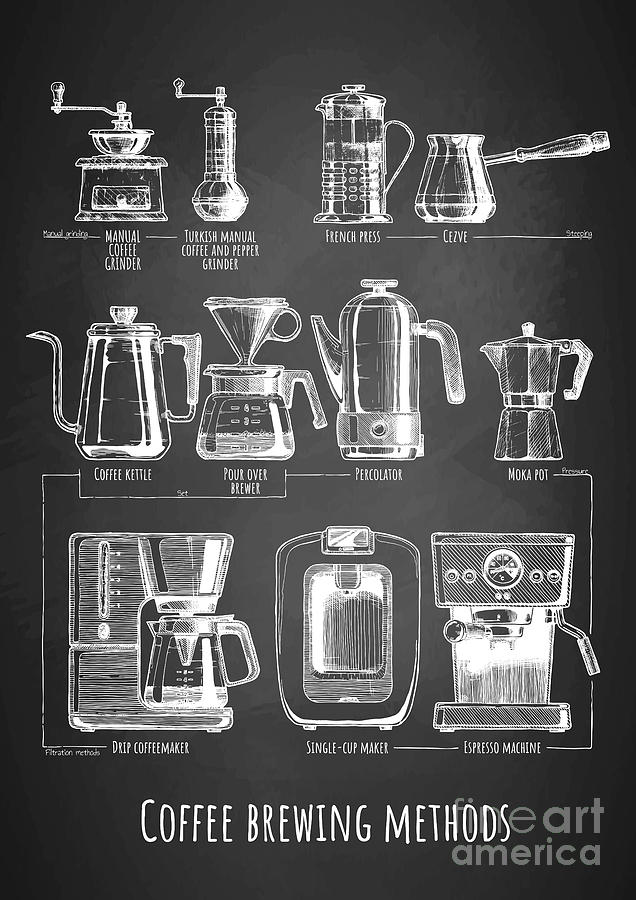Coffee Brewing Methods: Opening the Secrets to the Perfect Mug at Home
Coffee Brewing Methods: Opening the Secrets to the Perfect Mug at Home
Blog Article
The Science Behind Coffee Brewing: Just How Temperature Level and Time Affect Your Beverage
Comprehending the science behind coffee developing discloses that temperature level and time are not mere variables however essential components that dictate the drink's flavor account and total high quality. The ideal brewing temperature level generally drops in between 195 ° F and 205 ° F, while the duration of removal differs substantially across various methods. This interaction of elements can cause a cup that is either frustrating or delightful. As we check out the nuances of these aspects, the inquiry emerges: how can one successfully balance temperature level and time to attain that ideal brew?
The Chemistry of Coffee Removal
The chemistry of coffee extraction delves right into the intricate procedures that transform raw coffee beans into the fragrant drink taken pleasure in worldwide. This improvement primarily involves the solubility of various compounds existing in the beans, which are influenced by aspects such as grind dimension, water high quality, and the brewing approach employed.
Throughout the developing procedure, warm water functions as a solvent, drawing out soluble substances, consisting of caffeine, lipids, acids, and sugars, from the coffee premises. Each compound adds to the flavor profile, fragrance, and body of the last beverage. For circumstances, acids are accountable for appetizing and bright notes, while oils add to a rich mouthfeel.
The extraction procedure is not uniform; various substances liquify at different prices. The first stages of developing remove acids and sugars, causing an enjoyable level of acidity, while prolonged extraction can lead to bitterness because of over-extraction of unfavorable substances. Understanding these chemical interactions is vital for maximizing brewing methods, as the balance in between removal time and water temperature level can dramatically influence the general top quality of the coffee. Ultimately, understanding the chemistry of coffee extraction is vital to accomplishing a delicious and well-shaped mug.
Suitable Developing Temperatures
Discovering the appropriate brewing temperature is necessary for opening the full capacity of coffee tastes and scents - coffee brewing methods. Research indicates that the optimal variety for developing coffee exists in between 195 ° F to 205 ° F(90 ° C to 96 ° C) Within this variety, the extraction process successfully liquifies the preferable soluble substances in coffee beans, leading to a balanced and savory cup
Brewing at lower temperatures, such as below 195 ° F(90 ° C ), may lead to under-extraction, producing a weak and acidic mixture with soft tastes. Conversely, developing at temperatures going beyond 205 ° F(96 ° C) can result in over-extraction, generating a rough and bitter preference due to the too much dissolution of undesirable substances, such as tannins.
Furthermore, the suitable brewing temperature level can vary relying on the coffee bean type and roast degree. Lighter roasts typically profit from slightly higher temperature levels to improve their intricate taste accounts, while darker roasts may be better matched to reduced temperatures to minimize anger.
Inevitably, maintaining precision in brewing temperatures is vital for achieving a harmonious balance of flavors, guaranteeing that every cup of coffee provides a gratifying sensory experience.
Impact of Developing Time
Developing time plays an essential role in establishing the flavor account and overall high quality of coffee. The extraction process, which influences the taste, fragrance, and body of the beverage, is mainly based on how much time the coffee premises touch with water. Shorter brewing times can cause under-extraction, leading to a weak or sour flavor, as insufficient soluble substances are liquified. On the other hand, extended brewing can lead to over-extraction, where unwanted substances are launched, causing an astringent or bitter taste.
Optimum brewing time varies relying on the approach utilized and the grind size of the coffee. A French press commonly calls for regarding four mins, while espresso removal is typically completed within 25 to 30 seconds. It is necessary to adjust brewing time in combination with other variables, such as water temperature and coffee-to-water proportion, to achieve the wanted flavor account.
Comprehending the effect of brewing time makes it possible for coffee lovers to refine their developing methods, eventually boosting the sensory experience of their mug (coffee brewing methods). With mindful interest to this variable, one can open the full possibility of the coffee, exposing its unique attributes and nuances
Brewing Approaches and Their Results

As an example, methods like French press and chilly mixture permit a longer steeping time, leading to a fuller body and durable flavor because of enhanced removal of oils and soluble solids. On the other hand, espresso brewing uses high stress and a much shorter removal time, generating a concentrated shot that emphasizes intense flavors and an abundant crema.
Pour-over strategies, such as Chemex or V60, offer a more controlled extraction procedure, permitting the maker to adjust circulation rate and water distribution, which can boost illumination and quality. At the same time, percolation approaches cycle water via the coffee premises multiple times, leading to a more powerful, often bitter taste.
Finally, making use of paper filters versus steel filters can additionally influence the last taste; paper filters usually yield a cleaner mug by capturing oils and fine bits, while metal filters permit even more oils to go through, contributing to a fuller mouthfeel - coffee brewing methods. Recognizing these subtleties can elevate the coffee experience considerably
Tips for Perfecting Your Mixture
A well-executed mixture can transform even the simplest coffee right into an exceptional experience. To accomplish this, attention to information is vital. Start with premium, freshly baked beans, as their flavor account decreases over time. Grind the beans prior to brewing to make best use of quality, ensuring the work size matches your developing approach-- coarser for see this here French press and finer for coffee.
Water top quality plays an essential role; usage filtered water without impurities. The suitable developing temperature varies in between 195 ° F and 205 ° F(90 ° C to 96 ° C ) Too warm can scorch the coffee, while as well great may under-extract flavors.
Timing is just as important. For immersion techniques, soaking for three to 5 minutes is ideal, whereas drip approaches generally take about 5 mins. Try out brew times from this source to find your favored toughness.

Conclusion
In summary, the elaborate connection between temperature and time is vital in the coffee developing procedure. Following optimum developing temperature levels in between 195 ° F and 205 ° F, together with exact timing tailored to each approach, makes sure the preferred taste profile is attained. Comprehending these clinical principles equips individuals to refine their brewing methods, ultimately resulting in a more well balanced and enjoyable coffee experience. Proficiency of these variables is crucial for any kind of coffee lover seeking excellence in their beverage.
Understanding the scientific research behind coffee brewing reveals that temperature and time are not plain variables yet essential elements that determine the drink's taste account and overall top quality. Comprehending these chemical interactions is critical for maximizing brewing strategies, as the balance in between extraction the original source time and water temperature level can substantially influence the total quality of the coffee.Developing time plays a critical duty in identifying the taste profile and total high quality of coffee. By concentrating on these elements-- bean high quality, grind size, water temperature, soaking time, and ratio-- you can elevate your coffee developing process, resulting in a constantly superior cup.
In recap, the intricate partnership between temperature level and time is critical in the coffee developing procedure.
Report this page